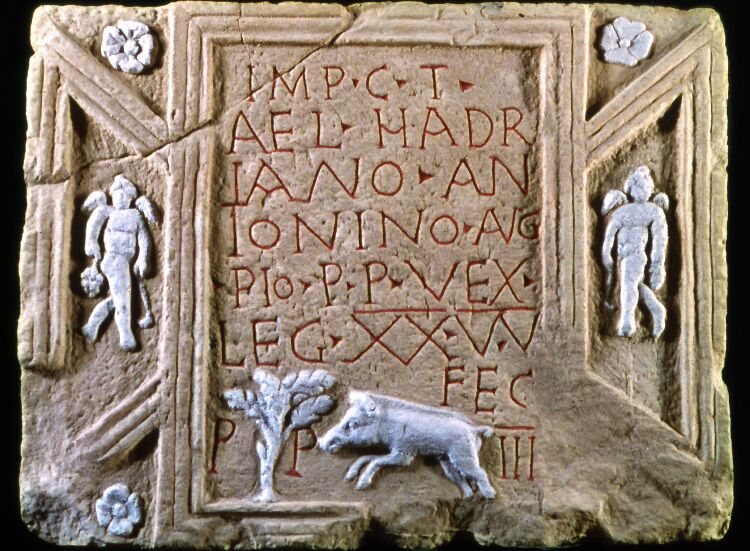
Distance slab, Hutcheson Hill. © Hunterian Museum
The Antonine Wall has given us the most important collection of Roman sculpture on any Roman frontier: the legionary distance slabs. Nineteen inscribed stone tablets, originally fixed to the rampart, provide a unique record of the work of building the Wall.
For construction purposes, the wall was divided into sections. As each was completed, the building team celebrated their achievement by creating a stone carved in local sandstone which honoured the emperor, recorded the distance covered in paces or feet, and featured the name of their legion.
The written inscriptions, originally painted red, reveal that the Wall was constructed by the three legions based in Britain: the Second Augustan Legion, the Sixth Victorious Legion and the Twentieth Victorious Valerian Legion. Some of the slabs show the ‘signatures’ of the legions: a boar for the Twentieth Legion, and Capricorn (half-goat, half-fish) or Pegasus (flying horse) for the Second Legion.
Building inscriptions are common throughout the Roman world, but there are no other known discoveries of distance slabs such as these on any other Roman frontier. Much more than just a building record, many of the stones display elaborate sculptures which communicated a powerful message of triumph even to native people unable to read. Carved images of conquering Romans celebrate the invaders’ victory over a downcast enemy; images of beheading and mutilation spell out a threatening warning.
All but two of the surviving slabs are now on display in the Hunterian Museum. A wonderful replica of the famous Bridgeness slab is now on display where it was found in Bo’ness; the original can be seen in the National Museum of Scotland.







